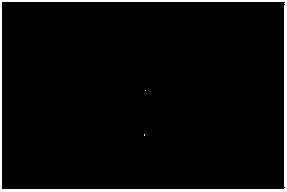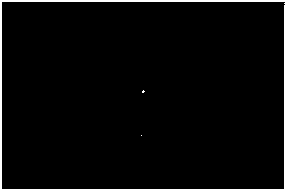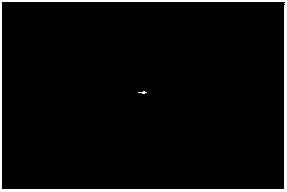Light scattering polycarbonate composite and light scattering materials (such as films, sheets, plates) prepared from light scattering polycarbonate composite
A technology of polycarbonate and polycarbonate resin, applied in the field of light-scattering polycarbonate composites and light-scattering materials (films, sheets, plates, etc.) prepared therefrom, can solve energy waste, limited application, material mechanics performance deterioration and other problems, to achieve the effect of excellent light scattering performance, simple and easy operation, and good light stability
- Summary
- Abstract
- Description
- Claims
- Application Information
AI Technical Summary
Problems solved by technology
Method used
Image
Examples
Embodiment 1
[0050] 100 parts by mass of polycarbonate resin, 11 parts by mass of acrylonitrile copolymer and conventional additives were melt blended and granulated by a twin-screw extruder to obtain a light-scattering polycarbonate compound. The composite was press-molded at 240°C to prepare a 0.60 mm thick light-scattering sheet. The measured light transmittance is 85.9%, and the haze is 64.45%. The tensile strength is 62.28MPa, and the heat distortion temperature is 114.8°C. After the point light source passes through the light scattering sheet, the scattering effect is as follows: figure 2 shown.
Embodiment 2
[0052] 100 parts by mass of polycarbonate resin, 25 parts by mass of acrylonitrile copolymer and conventional additives were melt blended and granulated by a twin-screw extruder to obtain a light-scattering polycarbonate compound. The composite was press-molded at 240°C to prepare a 0.60 mm thick light-scattering sheet. The measured light transmittance is 87.5%, and the haze is 90.28%. The tensile strength is 65.38MPa, and the heat distortion temperature is 103.7°C. After the point light source passes through the light scattering sheet, the scattering effect is as follows: image 3 shown.
Embodiment 3
[0054] 100 parts by mass of polycarbonate resin, 43 parts by mass of acrylonitrile copolymer, conventional additives and 5 parts of haze regulator were melt-blended and granulated by a twin-screw extruder to obtain a light-scattering polycarbonate compound. The composite was press-molded at 240°C to prepare a 0.60 mm thick light-scattering sheet. The measured light transmittance is 89.3%, and the haze is 91.62%. The tensile strength is 67.90MPa, and the heat distortion temperature is 100.9°C. After the point light source passes through the light scattering sheet, the scattering effect is as follows: Figure 4 shown.
PUM
| Property | Measurement | Unit |
|---|---|---|
| tensile strength | aaaaa | aaaaa |
| heat deflection temperature | aaaaa | aaaaa |
| tensile strength | aaaaa | aaaaa |
Abstract
Description
Claims
Application Information
 Login to View More
Login to View More - R&D
- Intellectual Property
- Life Sciences
- Materials
- Tech Scout
- Unparalleled Data Quality
- Higher Quality Content
- 60% Fewer Hallucinations
Browse by: Latest US Patents, China's latest patents, Technical Efficacy Thesaurus, Application Domain, Technology Topic, Popular Technical Reports.
© 2025 PatSnap. All rights reserved.Legal|Privacy policy|Modern Slavery Act Transparency Statement|Sitemap|About US| Contact US: help@patsnap.com



